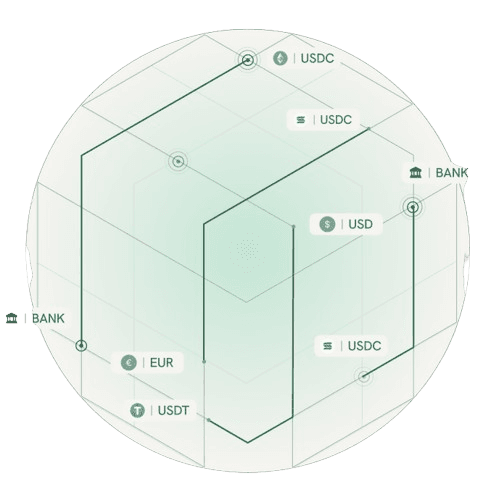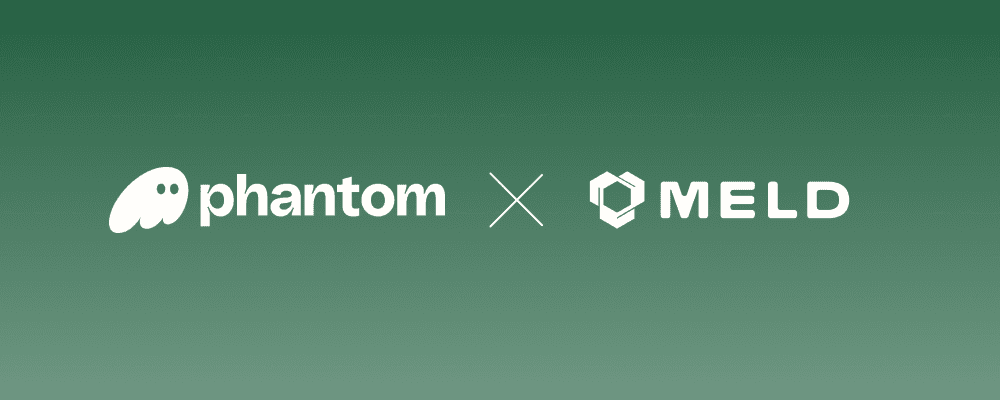
Introducing Meld Network: Access Digital Assets Anywhere
Digital Assets • Stablecoins • Identity • Network
Nov 18th, 2025
Crypto Stack • Onramps • Offramps • Blockchain • Payments
A Developer's Guide to Offering Multi-Chain TokensMarch 8th, 2023 | 9 mins

Blockchain technology has gained significant attention due to the rise of cryptocurrencies like Bitcoin and Ethereum, which utilize it as their underlying infrastructure. But what is blockchain, and how does it work? Why are there so many chains out there? We'll answer those questions and more in this article!
Blockchain technology - a decentralized, distributed ledger that securely records digital transactions across a network of computers, eliminating the need for a central authority - has gained significant attention due to the rise of cryptocurrencies like Bitcoin and Ethereum. The essence of the blockchain lies in its database structure, which securely and transparently stores information. Each block of data is linked to the previous one, creating a chain of blocks that ensures data integrity and security. This high degree of transparency makes it nearly impossible for anyone to alter or tamper with the data, creating an environment of trust among the network participants.
The real potential of blockchain technology lies in its ability to foster trust and transparency. By reducing the need for intermediaries like banks, blockchain opens up a more secure, efficient, and effective way to manage transactions, data, and digital assets. From revolutionizing industries like finance, supply chain management, and healthcare to paving the way for government bodies to store property records and votes, blockchain is pushing the boundaries of how we operate in a digital ecosystem.
Learn more about how Meld is helping developers unlock crypto here
There are four types of blockchains networks:
Public
An open, decentralized network where anyone can join, participate, and view all transactions. It offers transparency, security, and censorship resistance, making it ideal for cryptocurrencies like Bitcoin.
Private
A restricted, centralized network, where access and participation are limited to specific individuals or organizations. It provides more control and privacy, making it suitable for internal business processes.
Consortium
A semi-decentralized network is governed by a group of pre-selected entities, such as multiple organizations collaborating on a project. It balances control, privacy, and trust, making it ideal for cross-industry applications.
Hybrid
Combining features of public and private blockchains, it allows selective transparency and control. It enables businesses to share specific data publicly while keeping sensitive information confidential, offering a versatile solution for various use cases.
Most people think of the following when they hear “blockchain”:
1. Bitcoin
Introduced in 2008 by the pseudonymous individual or group Satoshi Nakamoto, the Bitcoin blockchain was one of the first to enable secure, transparent, and trustless transactions without intermediaries such as banks. It paved the way for developing numerous other cryptocurrencies and blockchain platforms, proving the potential of decentralized systems in various applications beyond digital currency.
2. Ethereum
Launched in 2015 by Vitalik Buterin, Ethereum has become one of the most prominent platforms in the blockchain ecosystem, attracting developers and businesses looking to leverage its robust infrastructure. Ethereum's token standard, ERC-20, has become the industry standard for creating and issuing new tokens - contributing to the explosion of Initial Coin Offerings (ICOs) and the tokenization of various assets.
3. Polygon
Formerly known as Matic Network, it is a Layer 2 scaling solution and framework for building and connecting Ethereum-compatible blockchain networks. Polygon aims to address Ethereum's scalability, speed, and transaction cost issues by providing a multi-chain ecosystem with a flexible architecture, allowing developers to create scalable and interoperable dApps.
4. Avalanche
Launched in 2020 by Ava Labs, Avalanche has gained significant attention in the blockchain and cryptocurrency space for its innovative approach to consensus and its potential to overcome the limitations of existing platforms. By providing a fast, secure, and interoperable infrastructure, Avalanche is poised to play a significant role in the ongoing development of the blockchain industry.
5. Algorand
Founded in 2017 by Silvio Micali, Algorand has gathered attention in the blockchain and cryptocurrency space for its innovative approach to consensus and its ability to address the blockchain trilemma - scalability, security, and decentralization. Algorand can potentially drive widespread adoption of blockchain technology across various industries and use cases by providing a scalable, secure, and decentralized infrastructure.
These are only a few of the numerous chains are still out there. New blockchains are constantly being developed to overcome existing blockchains' limitations.
With Web3 powered by various blockchains, each with its own native token, the landscape can become complex and fragmented. Moreover, tokens can exist across multiple chains, such as ETH on Polygon, which gives developers the challenge of providing access to every token on every chain to cater to their customers' diverse needs - which can be time-consuming and expensive. That's where Meld comes in!
Once integrated with Meld's unified Crypto Stack, developers can access and leverage multiple crypto onramps and offramps - all through a single API. This gives your customers access to an extensive selection of over 600 tokens spanning over 130 blockchains, ensuring they have diverse options at their fingertips. This vast array of tokens, coupled with the ability to cater to customers in more than 200 countries and process transactions in over 130 fiat currencies, enables developers to access a wider target market and directly impact their bottom line.
Want to know more about Meld's token coverage and Crypto Stack? Contact us and get access to our documentation!
Blockchain technology has emerged as a groundbreaking innovation with the potential to transform various industries and reshape how we conduct transactions, manage data, and interact with digital assets. Blockchains provide a robust foundation for developing a wide array of applications, from cryptocurrencies and decentralized finance to NFTs, by offering decentralization, security, transparency, and immutability.
And amidst it all, Meld is here to help developers build and launch faster than ever! Learn more about how to launch in weeks instead of sprints here.
Q: How can I store my AVAX, Solana, Cardano, BNB, Ethereum, and Algorand tokens securely in a wallet?
You can store your tokens in hardware wallets like Trezor, which offers security and supports multiple cryptocurrencies, or use dedicated software wallets like Solana Wallet and Cardano Wallet.
Q: How does the USDC coin work on Ethereum and Polygon Matic blockchains?
USDC is a stablecoin pegged to the US Dollar and operates on multiple blockchains, including Ethereum and Polygon Matic. It leverages smart contracts to maintain its value and enable seamless transactions across various platforms.
Q: How can I buy crypto like AVAX, BNB, Ethereum, ALGO, and Matic?
You can use popular exchanges or trading platforms supporting the desired tokens to buy cryptocurrencies. Create an account, complete the necessary verification, deposit funds, and purchase your chosen crypto.
Q: What is the role of Ether (ETH) in the Ethereum blockchain, and how is it different from other cryptocurrencies like AVAX, BNB, and ALGO?
Ether (ETH) is the native cryptocurrency of the Ethereum blockchain, used to pay transaction fees and computational services. While other cryptocurrencies like AVAX, BNB, and ALGO serve similar utility purposes on their respective platforms, Ethereum's programmability and smart contract capabilities set it apart.

Introducing Meld Network: Access Digital Assets Anywhere
Digital Assets • Stablecoins • Identity • Network
Nov 18th, 2025

Meld Partners with Phantom to Enhance Global Crypto Access
Aug 19th, 2024

Simplifying Crypto Purchase with One Click Checkouts
Crypto Stack • Onramps • Offramps
January 8th, 2023